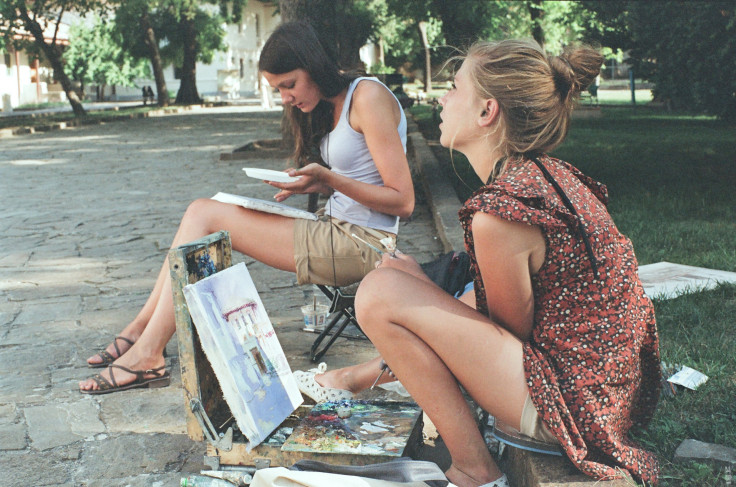Artists, Musicians, And Actors Tend To Be Middle Class, But It Has Nothing To Do With How Much Money They're Making

Middle class members of society are more likely to be artists, musicians, and actors, and up until now, science has been unable to explain why. However, research from the University of Oxford, published in the journal Sociology, pulls back the curtain on why one class dominates these creative fields. And it turns out the reason may have little to do with socioeconomic status.
"Arts participation, unlike arts consumption and cultural engagement generally, is not closely associated with either social class or social status," said the study’s lead author Dr. Aaron Reeves, a sociologist at the University of Oxford, in a press release. "This result deviates from the expectation — unexpectedly those with higher incomes are less likely to be arts participants. These results show that it is educational attainment alone, and not social status, that is shaping the probability of being an arts participant."
Reeves surveyed more than 78,000 people who were either involved in the arts as amateurs or professionals, as well as those who were not involved in artistic activities. Of those surveyed, 19 percent were involved in music; 18 percent in painting or photography; 9 percent in dance; 6 percent in poetry, play, or fiction writing; and 2 percent in drama or opera. Only 22 percent were not involved in any form of art.
Having a higher income did not mean a person was more likely to participate in art. In fact, he found those who earned just over $46,000 a year were still less likely to take part in artistic endeavors than those who earned less. Reeves drew the dividing line between middle- and upper-class at $46,000 because the maximum income of a middle class household is just over $47,000. Education seemed to be the tether between a person’s artistic likelihood. Those with a college degree were four times more likely to get involved in painting and photography than those with no education. Those with a degree were also five times more likely to participate in dance and crafts, and four times as likely to play a musical instrument.
Those who wound up in artistic professions or participated in arts on the side were more likely to be educated, which meant their level of education played a greater role in their artistic proclivities than their socioeconomic class.
Reeves believes there are two reasons for this phenomenon: "First, those with higher information processing capacity are more likely to enjoy highbrow cultural practices, such as arts participation, and be university graduates,” he explained. “University graduates are more likely to possess the cultural resources necessary for both arts consumption and arts participation. Second, universities make admissions decisions using information on extracurricular and cultural activities, increasing the likelihood that university graduates are culturally active."
Source: Reeves A. Neither class nor status: arts participation and the social strata. Sociology. 2015.
Published by Medicaldaily.com



























